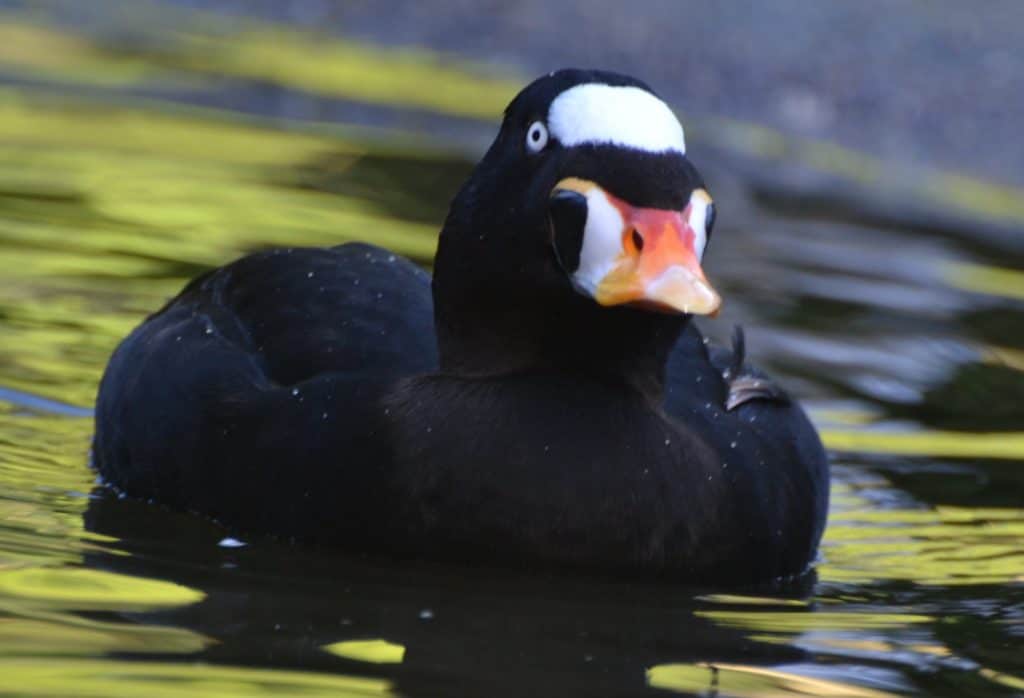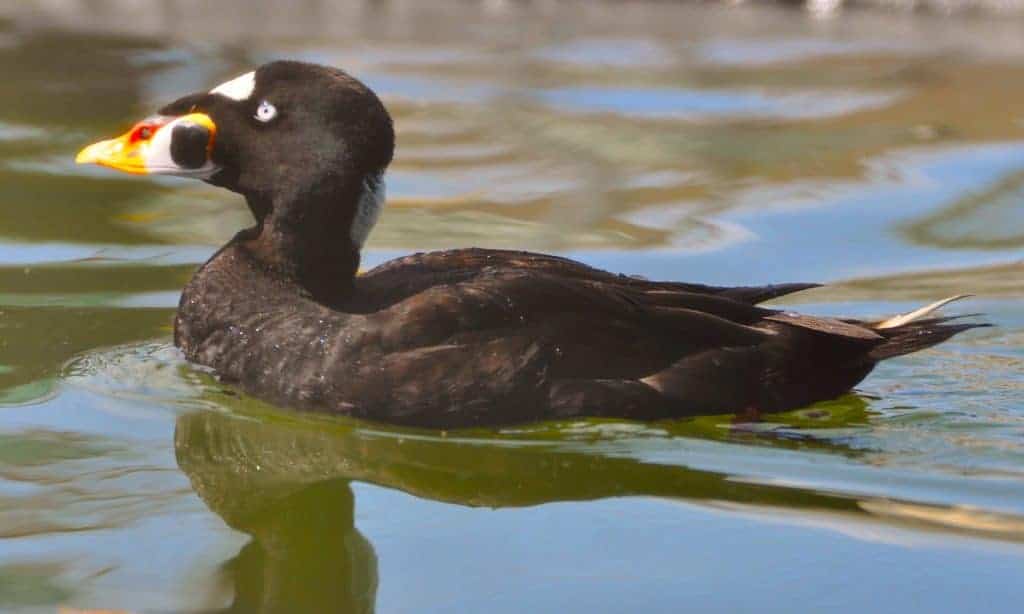Surf Scoter

Surf Scoters can be easily identified by the two prominent white patches on the head and nape of the male, of these otherwise mostly black birds. The females are mostly brown, and much lighter. Juveniles closely resemble females in colouration.


Melanitta perspicillata
One of the larger North American sea ducks, Surf Scoters can be found on both Pacific and Atlantic coasts of North America. The largest population exists on the west coast of North America, extending from Alaska down to the Baja Peninsula in Mexico. During the breeding season, the birds migrate north and inland, where they nest in inland freshwater lakes. In the British Isles, a few appear each year, mainly seen around the northern isles of Orkney, Shetland and Fair Isle, but also on mainland coasts. They are usually seen from October to March.
The diet consists largely of mussels, other bivalves and crustaceans. They have a strong, specially-adapted bill.



Surf Scoters are only kept in captivity at one location in Germany, and a single female at Montreal Zoo.
The Surf Scoter lays between 5 and 8 eggs at some distance from water, sometimes well-concealed in bushy cover. The nest is a shallow depression with grass and down lining. Incubation is about 28 days and the duck incubates and rears her brood alone.
Share this page